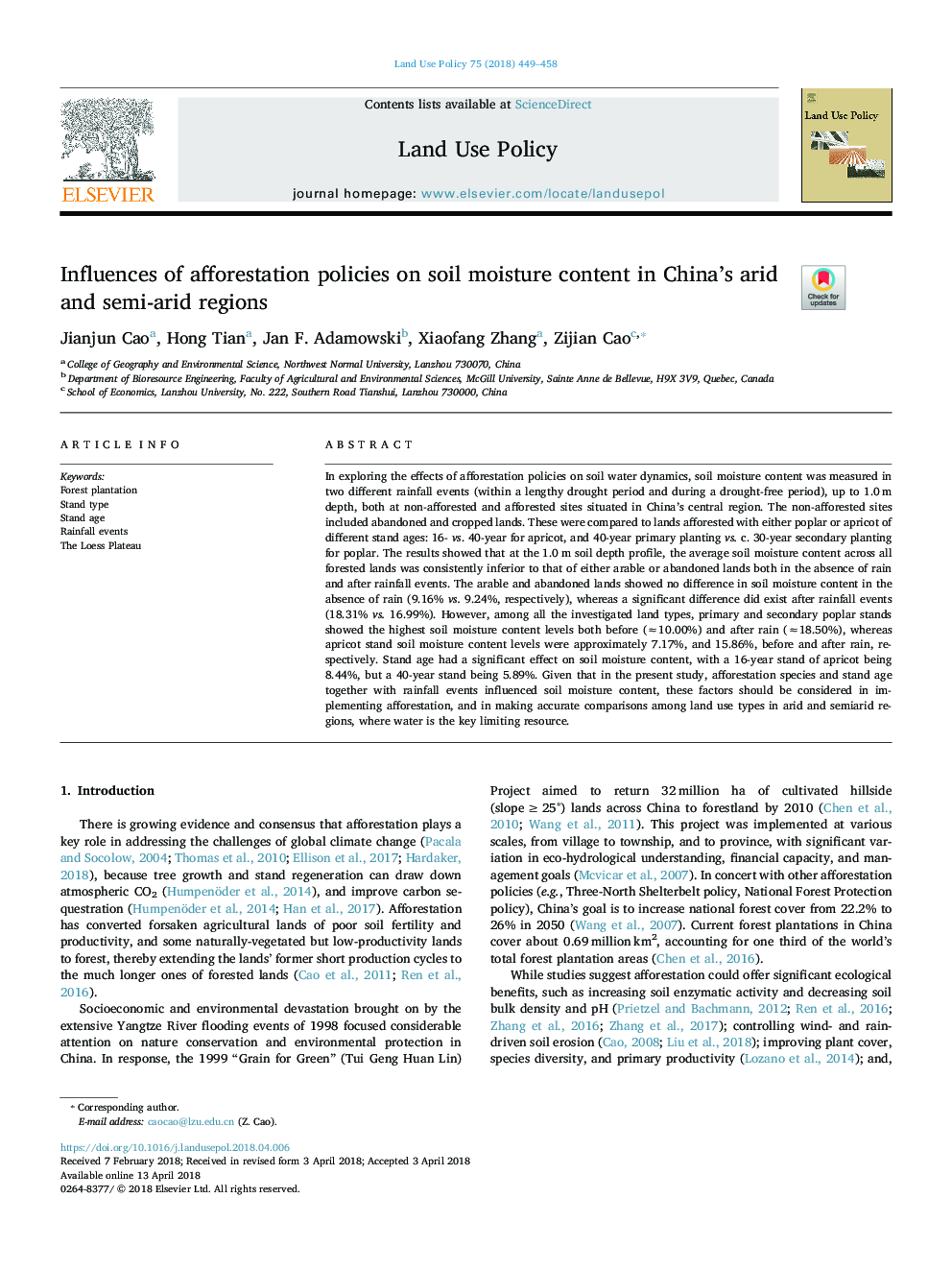| Article ID | Journal | Published Year | Pages | File Type |
|---|---|---|---|---|
| 6546428 | Land Use Policy | 2018 | 10 Pages |
Abstract
In exploring the effects of afforestation policies on soil water dynamics, soil moisture content was measured in two different rainfall events (within a lengthy drought period and during a drought-free period), up to 1.0â¯m depth, both at non-afforested and afforested sites situated in China's central region. The non-afforested sites included abandoned and cropped lands. These were compared to lands afforested with either poplar or apricot of different stand ages: 16- vs. 40-year for apricot, and 40-year primary planting vs. c. 30-year secondary planting for poplar. The results showed that at the 1.0â¯m soil depth profile, the average soil moisture content across all forested lands was consistently inferior to that of either arable or abandoned lands both in the absence of rain and after rainfall events. The arable and abandoned lands showed no difference in soil moisture content in the absence of rain (9.16% vs. 9.24%, respectively), whereas a significant difference did exist after rainfall events (18.31% vs. 16.99%). However, among all the investigated land types, primary and secondary poplar stands showed the highest soil moisture content levels both before (â10.00%) and after rain (â18.50%), whereas apricot stand soil moisture content levels were approximately 7.17%, and 15.86%, before and after rain, respectively. Stand age had a significant effect on soil moisture content, with a 16-year stand of apricot being 8.44%, but a 40-year stand being 5.89%. Given that in the present study, afforestation species and stand age together with rainfall events influenced soil moisture content, these factors should be considered in implementing afforestation, and in making accurate comparisons among land use types in arid and semiarid regions, where water is the key limiting resource.
Related Topics
Life Sciences
Agricultural and Biological Sciences
Forestry
Authors
Jianjun Cao, Hong Tian, Jan F. Adamowski, Xiaofang Zhang, Zijian Cao,
